Java IslandJava Island: OverviewJava (Known as Djawa or Jawa in Indonesia) is one of Indonesia's Greater Sunda Islands. It is surrounded to the southern by the Indian Ocean and to the northern by the Java Sea. With a populace of 151.8 million, comprising residents of its nearby islands, primarily Madura, Java accounts for 56.1 percent of the Indonesia's population. Java has a population of 147.7 million people, earning it to be the world's most populated island. 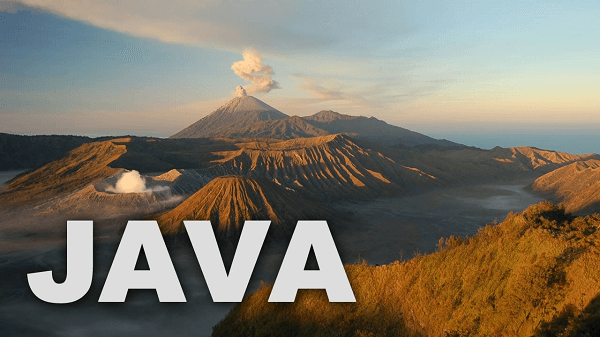
Java is an Indonesian island located in southeastern Malaysia and Sumatra, south of Borneo (Kalimantan) and western Bali. Java island is residence to about 50% of Indonesia's inhabitants and is politically and economically dominant in the nation. 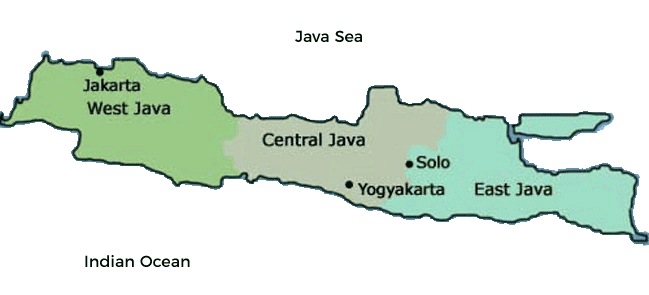
Jakarta, is capital city of Indonesia, it is located on Java's northwestern shore. Much of Indonesia's famous, popular history occurred in Java, and it served as the heart of strong Hindu-Buddhist dynasties, Islamic sultanates, and the colonial Dutch East Indies. In the time frame of 1930-140, this island was also the epicenter of Indonesia's freedom movement. Java island is the most powerful political, economic, and cultural force in Indonesia. Java is home to 4 of Indonesia's 8 UNESCO World Heritage Sites: Borobudur Temple, Prambanan Temple, and Sangiran Early Man Site, and Ujung Kulon National Park. 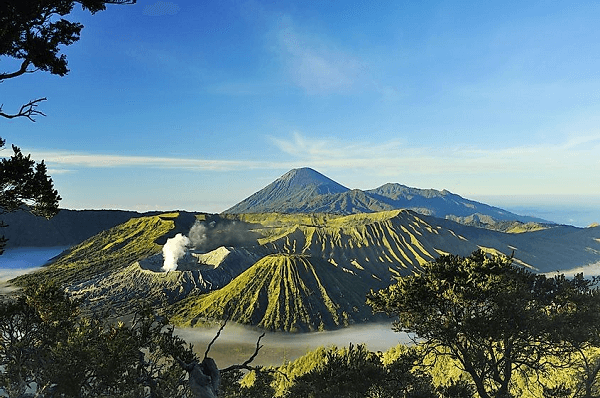
Java Island stands at the 13th position in list of largest islands around the globe and occupied the 5th position in terms of being the largest in Indonesia by area or land, developed by volcanic eruptions caused by tectonic subduction of the Australian Plate beneath the Sunda Plate (53,600 sq mi). The area's east-west spine is a range of volcanic mountain ranges. EtymologyThe emergence of the title 'Java' is unknown. One theory is that early Indian explorers called the island after the jáwa-wut plant, which was supposed to be plentiful on the island at the time, and that the area had several titles before Indianization. Other likely sources include the term jaú and its variants, which signify "beyond" or "far." In Sanskrit, yava denotes barley, a plant native to the island. Outsiders frequently used the same name for Java and the nearby islands or used titles infrequently for various islands. Marco Polo, for instance, alluded to neighboring Sumatra as "small Java," and Ptolemy identified Sumatra as Jaba-diu. 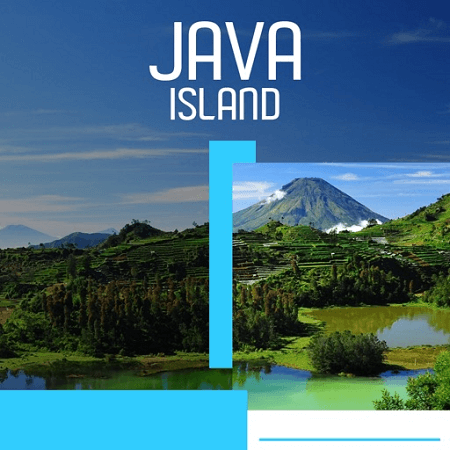
Geography and Language of Java IslandAlthough Java is heavily volcanic, significant eruptions are rare; only 35 of the island's 112 volcanoes are active. The volcanic peaks are crowded together in the west and become more widely scattered in the center and eastern regions of the island. Mount Semeru, at 12,060 feet, is the highest volcano (3,676 meters). South of the volcanic zone, a succession of irregular plateaus rises to a height of around 1,000 feet (300 meters). The java island has four major dialects; these are Javanese, Sundanese, Madurese, and Betawi, with Javanese and Sundanese being the most widely spoken. 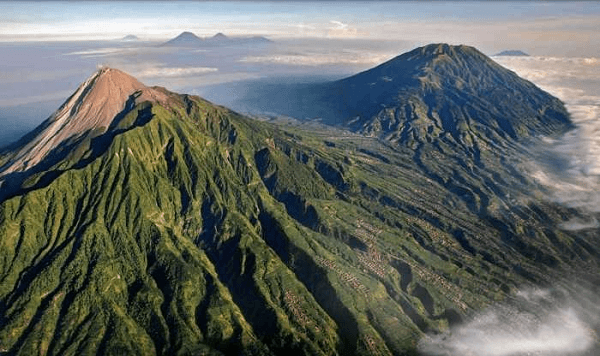
The java island is home to just ethnic communities: Javanese in the eastern and central regions and Sundanese in the western areas. The Madurese in Java's eastern thrust are migrants from Madura Island, but the Betawi in Jakarta are composites of several ethnic communities in Indonesia. The majority of people who live are bilingual, speaking both Indonesian and English (the official language of Indonesia) The majority of citizens are bilingual, knowing Indonesian (the country's official language) as their first or second language. While Muslims constitute the majority of Java Islands inhabitants, the island is home to people of all religious faiths, nationalities, and cultures. 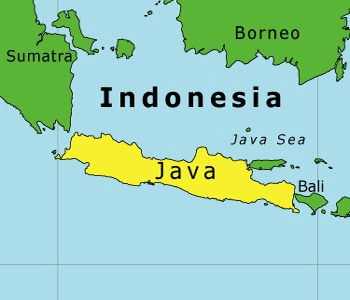
The island has the longest rivers are Solo River and the Brantas River, these are the 372 miles (600 km) in length. The Solo River begins in northern Java at the Tawu volcano and meanders to eastern direction in the Java Sea near Surabaya. The Java river system is crucial to the irrigation system, which then, in turn, is essential to the island's economy, and over two-thirds of the Java island is under cultivation. On the basis of the administration, the java island is split into 4 provinces: Bantan, Jawa Barat (Western Java), Jawa Tengah (Central Java), and Jawa Timur (Eastern Java), as well as one specialized province (Yogyakarta) and one special capital province (Greater Jakarta). Officially, Yogyakarta and Greater Jakarta are also designated as provinces. The climate of Java IslandAll year, the climate in Java is hot and humid. The lowlands towards the northern shore have the highest temperatures, but the mountains are significantly cooler. The extreme humidity frequently renders the climate incapacitating. The monsoon or rainy season lasts from November to the month of March. This season is mainly rainy and gloomy. In contrast, the southeast monsoon season lasts from April to October and delivers periodic rain but is mostly sunny. The equatorial rain belts almost totally cover Java Island. It has a typical tropical environment with high precipitation, hot temperatures, and High humidity levels. Java has two distinct seasons: monsoon from December to March and a normal or dry season from May to October. During the monsoon time, temperatures in the java island vary between 21 degrees Celsius to 33 degrees Celsius, with high or elevated altitudes being much cold. The typical low temperature is 17-18 degrees Celsius.A more temperate climate is produced by trade and monsoon breezes from the Indian and Pacific Oceans. Demographics of Java IslandJava is perhaps the highest inhabited island in the Indonesia's archipelago. Despite accounting for only 7% of Indonesia's total area, the java island is home to approximately 56.7 percent of the national population. Java has a population of more than 145 million people (as of 2015), making it one of the most heavily packed places on the planet, with a population density of 2,070 people per square kilometer. 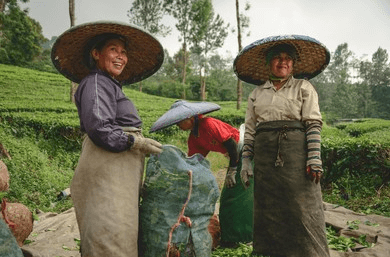
In fact, the people of Java Island make it the most populated island all over the world. Unsurprisingly, Java is home to the majority of Indonesia's major cities. The capital, Jakarta, has a populace of more than 10 million people, making it the country's most populous metropolis. Surabaya and Bandung, Java's second and third largest cities, are also on the island. In fact, 8 out of 10 largest cities of Indonesia are situated in this island only. Java island is home to a plethora of ethnic communities. Among them is the Javanese, who are named after the island and account for 40% of the Indonesian population. 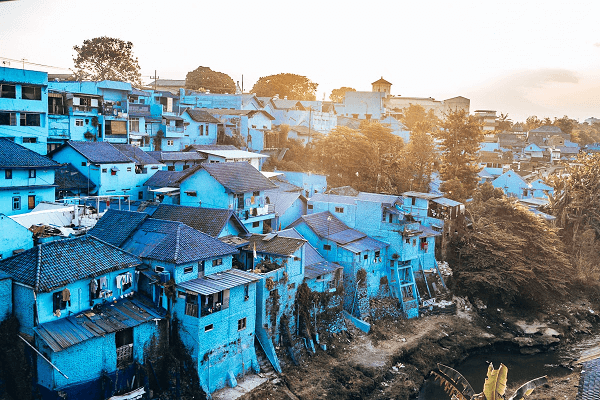
The Sundanese live on the west part of the island, they are named after the Sunda Islands, located in southwest Indonesia, which encompass of Java. Balinese and Madurese communities from the adjacent islands of Bali and Madura live in great numbers in east part Java. On the island of Java, smaller ethnic groups include the Osing and Tengger of eastern Java and the Cirebon, Baduy, Betawi, and Banten of the western part of the island. Java, as well as the rest of Indonesia, is varied and diverse in terms of linguistics and ethinicities. Javanese, the language of the inhabitants of the same name, is spoken by more than 30 percent of the nation's people. Sundanese is widely spoken in the western portion of Java Island. Although Bahasa Indonesia, a typical type of Malay, is widely spoken by 94 percent of the Indonesian populace, it is one of the main dialect of 20 percent of Indonesia's individuals. 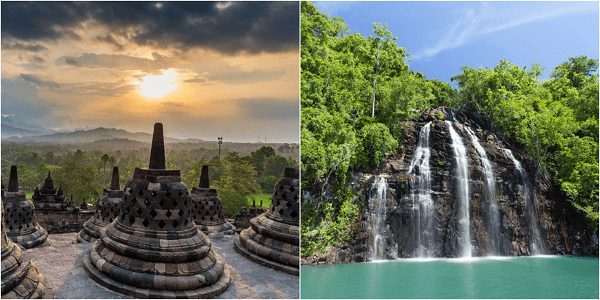
Bahasa Indonesia is the most popular dialect or lingo in Jakarta. In regard of religion, the wide majority of Javanese and the vast majority of Indonesians in particular practice Islam. Sunni Islam is the major sect in Java and throughout Indonesia. The ethnic Javanese Muslims are originally separated into two groups: the Abangan and the Santri. Javanese Islam in its Abangan form has aspects of Hindu, Buddhist and Animist traditions. This type of Islam's adherents are mostly found in rural areas. Santri Islam, on the other hand, is a more orthodox style of Islam that focuses on the Quran and the mosque. The large proportion of its believers are city dwellers. History Of Java IslandAs per the records and research, Humans had occupied Java since 2500 BCE, when agriculture was initially exercised on the island. The Kingdom of Mataram was the first to be created in Java in the ninth century CE. Although this was a Hindu country, its kings embraced Mahayana Buddhism. Buddhism had a great influence on Java island during the 8th and 9th centuries. However, Hindu culture commences to make advances on the Java after that, particularly at the time of reign of the Srivijayan Empire, which was a golden period of culture and literature. It was an era when the Hindu epics were translated from Sanskrit to Javanese language. The empire of Singhasari was the first one to unify the entire Java Island. Kertanagara, one of its rulers who governed from 1268 to 1292, united the entire area and expanded his influence over sections of Borneo, Bali, and other eastern islands. The Majapahit Empire had supplanted Singharasi by the late 13th century. It was located in eastern Java and ruled over the majority of the Indonesian archipelago. 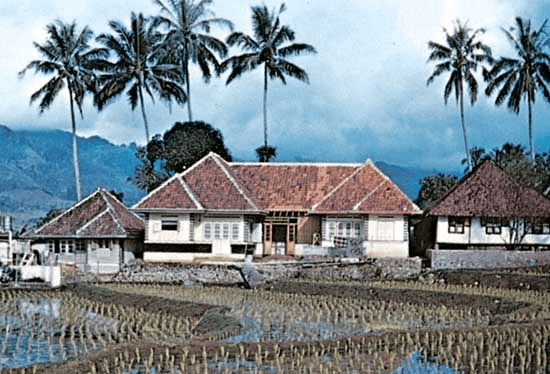
By the 16th century, Muslim kingdoms founded on Java's beaches were on the ascent. Demak was the first significant Muslim kingdom on the continent, emerging in the last part of the 15th century and reaching its peak of prominence by 1540. This kingdom, established on Java's north-central coast, governed much of the island's northeastern shore, and its Islamic impact extended as far as western Java. Europeans started exploring the Indonesian archipelago in the 16th century as well. In 1512, the Portuguese became the first to come, joined by the Spaniards later. The Dutch initially landed in the Indonesian archipelago in 1596, and in 1603 they built their initial permanent commercial base there. In 1611, the centre of Dutch colonial administration was established in what currently is known as Jakarta. Indonesia technically became a Dutch colony in the nineteenth century, when the Dutch government took over management of the region from the Dutch East India Company. 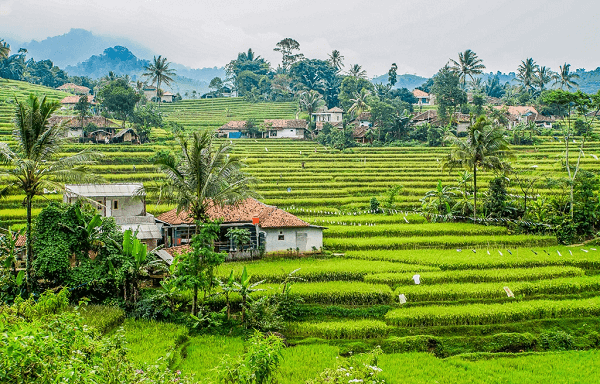
The Dutch ruled Indonesia, comprising of Java, as the Dutch East Indies until just after World War II, when the native populance opposed Dutch attempts to retake control of the landmass following the end of the Japan invasion and annexation of the area. Indonesia proclaimed independence in 1945; however, its war with the Dutch lasted until 1949, when it took complete control of the erstwhile Dutch East Indies. 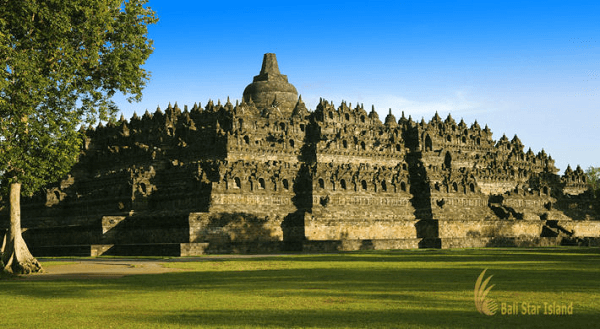
Jakarta was designated as Indonesia's capital, and the majority of the country's political leaders are of Javanese descent. For instance, all but one of Indonesia's presidents are from Java. Currently, java island constitutes the focal point of the country's political and economic life. Economy and Natural Resources Of Java IslandJava is home to a large portion of Indonesia's riches, and the island's metropolitan districts are among the richest and most advanced in the country. The economy of Java island is highly diverse, with significant agricultural, mining, industrial, and oil and gas sectors. As previously said, agriculture covers more than two-thirds of the island. Sugar cane, kapok, rubber, tea, coffee, tobacco, cocoa, cinchona (source of quinine), corn, maize, cassava, peanut, soybean, sweet potato, and rice are all important crops. Oil deposits can be located off the northwest coast of Java, and the island also has refineries. Tin, gold, silver, copper, coal, manganese, phosphate, and sulfur are among the minerals extracted on the island. Java island is home to the majority of manufacturingindustry of Indonesia, with industries primarily located in the cities of Jakarta and Surabaya. Rubber manufacturing, autos, textiles, brewing, and the development of footwear, papers, soaps, cement, and cigarettes are all large industries. Cultural Heritage Of Java IslandThere are various sites and places that make Java Island culturally rich. 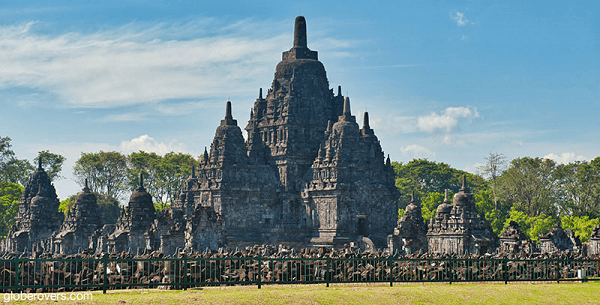
The monumental stupa of Borobudur (c. 800; designated a World Heritage site in 1991) and the temple of Mendut are examples of Indo-Javanese architecture, as is the Buddhist temple Sewu (9th century), the spectacular Shiva temple Prambanan (9th century), the holy showering areas of Jalatunda (late 10th century) and Belahan (mid-11th century), and around Hindu temple of Jabung (c. 10th century). 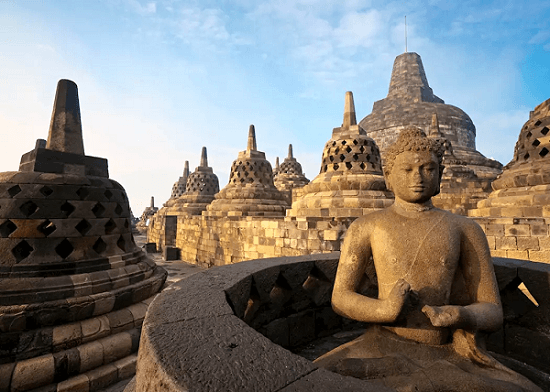
Java Island has it all: two of the world's greatest ancient ruins, volcanoes (all 121 of them), important national parks, rainforests, tea and rice plantations, large towns, big waves, and perhaps even savanna. The scenery in most regions of Java is stunning, and despite the island's overcrowding, there are still many untouched areas. Although the beaches in Java Island are not particularly appealing, and tides can be dangerous, especially in the south, travelers can discover white-sand beaches and coral islands in surrounding archipelagos such as Pulau Seribu and Karimunjawa. 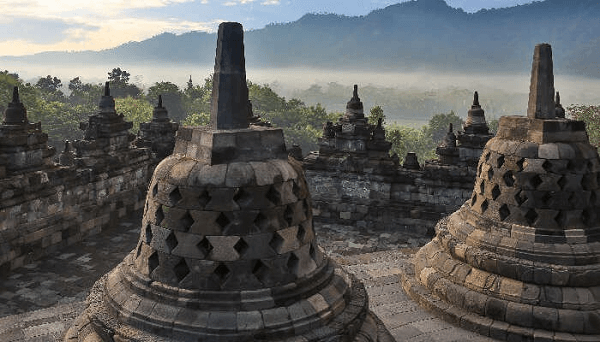
How to Reach Java IslandBy planeThe majority of tourists land at Jakarta, Bandung, Semarang, Surabaya, Solo, and Yogyakarta. There are various airlines like Garuda, Merpati, Lion Air, AirAsia, Singapore, Qantas, Cathay Pacific, KLM, PAL, Thai International, JAL, KAL, Air India, and others. By SeaVarious ferry services provided by PT Angkutan Sungai Danau dan Penyeberangan/ASDP; these are 2-3 hour trips. Passenger ship routes operated by PT Pelayaran Nasional Indonesia/PELNI including to North Sumatra, South Sulawesi, and so on So you can either reach java island by sea or air. Lastly note- Apply common sense, just as you would in your own nation. Theft is the most common (fortunately), and violent crime is uncommon in Indonesia. However, it is prudent to exercise extra caution in Jakarta and other major cities. It's important to maintain distance from crowded places. Traffic can be a nightmare. Keep an eye out for trucks, vehicles, motorcycles, and other moving items. There is only one norm that applies: "might is right."
Next TopicJava Man
|
 For Videos Join Our Youtube Channel: Join Now
For Videos Join Our Youtube Channel: Join Now
Feedback
- Send your Feedback to [email protected]
Help Others, Please Share










